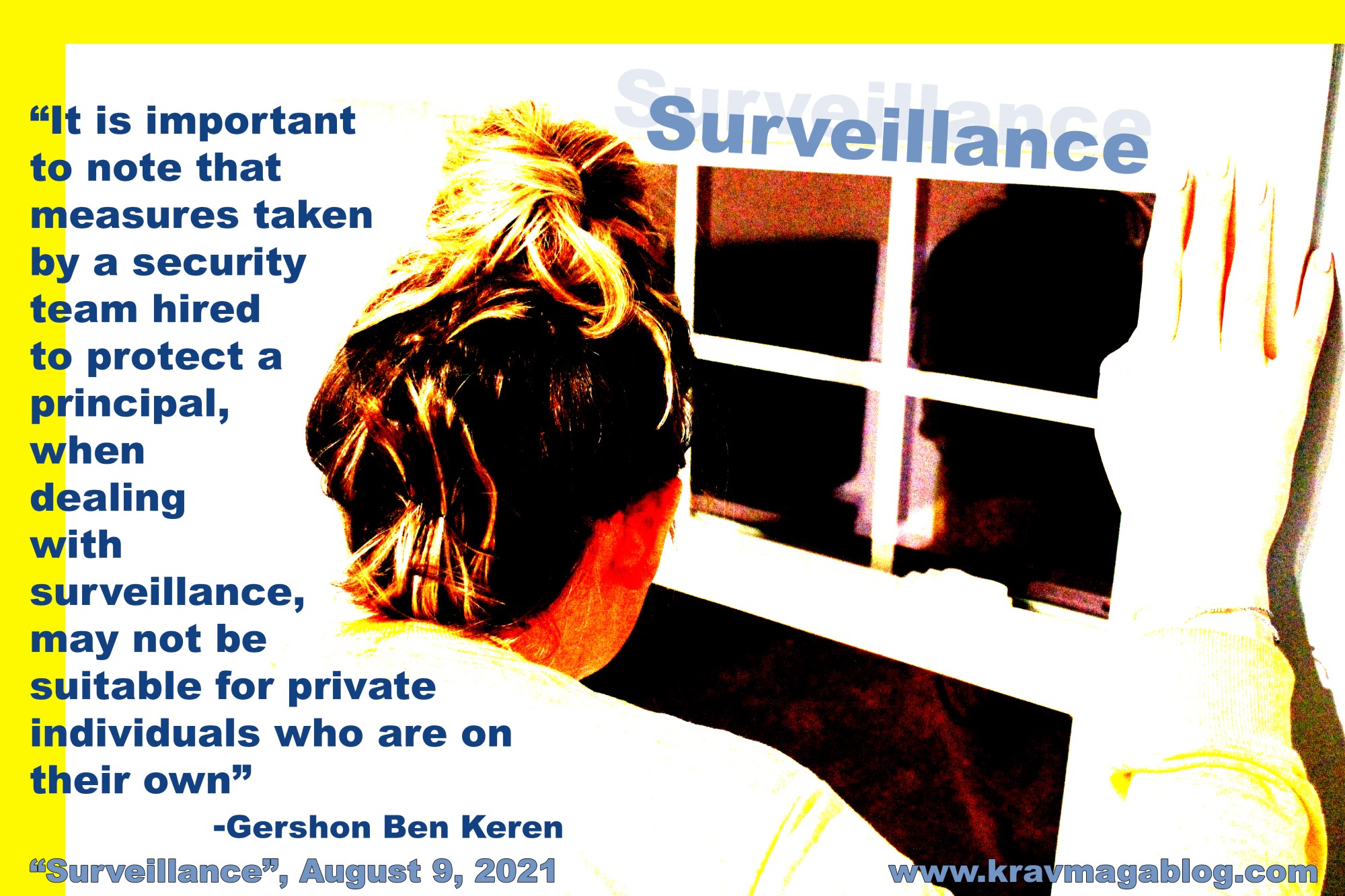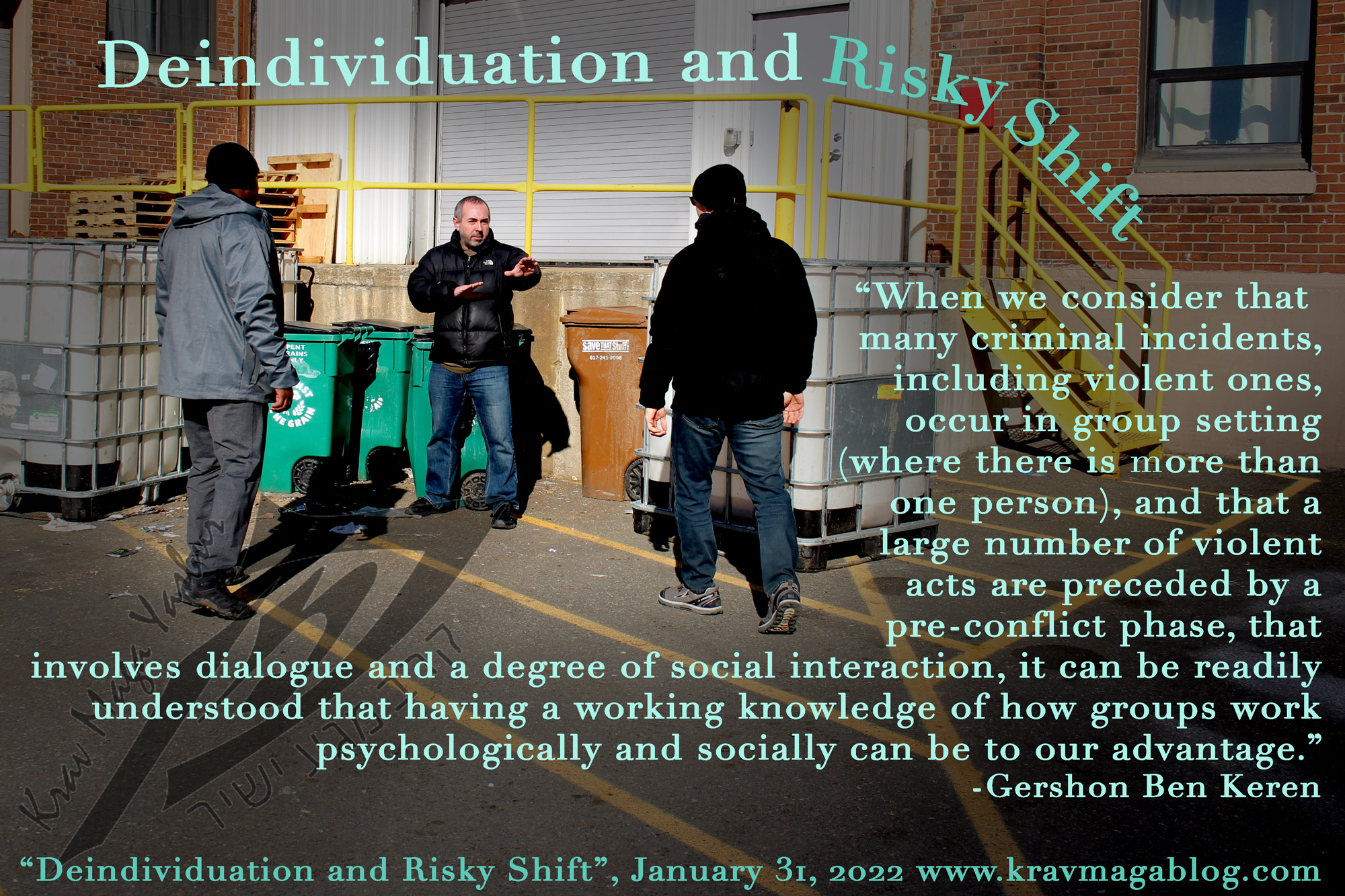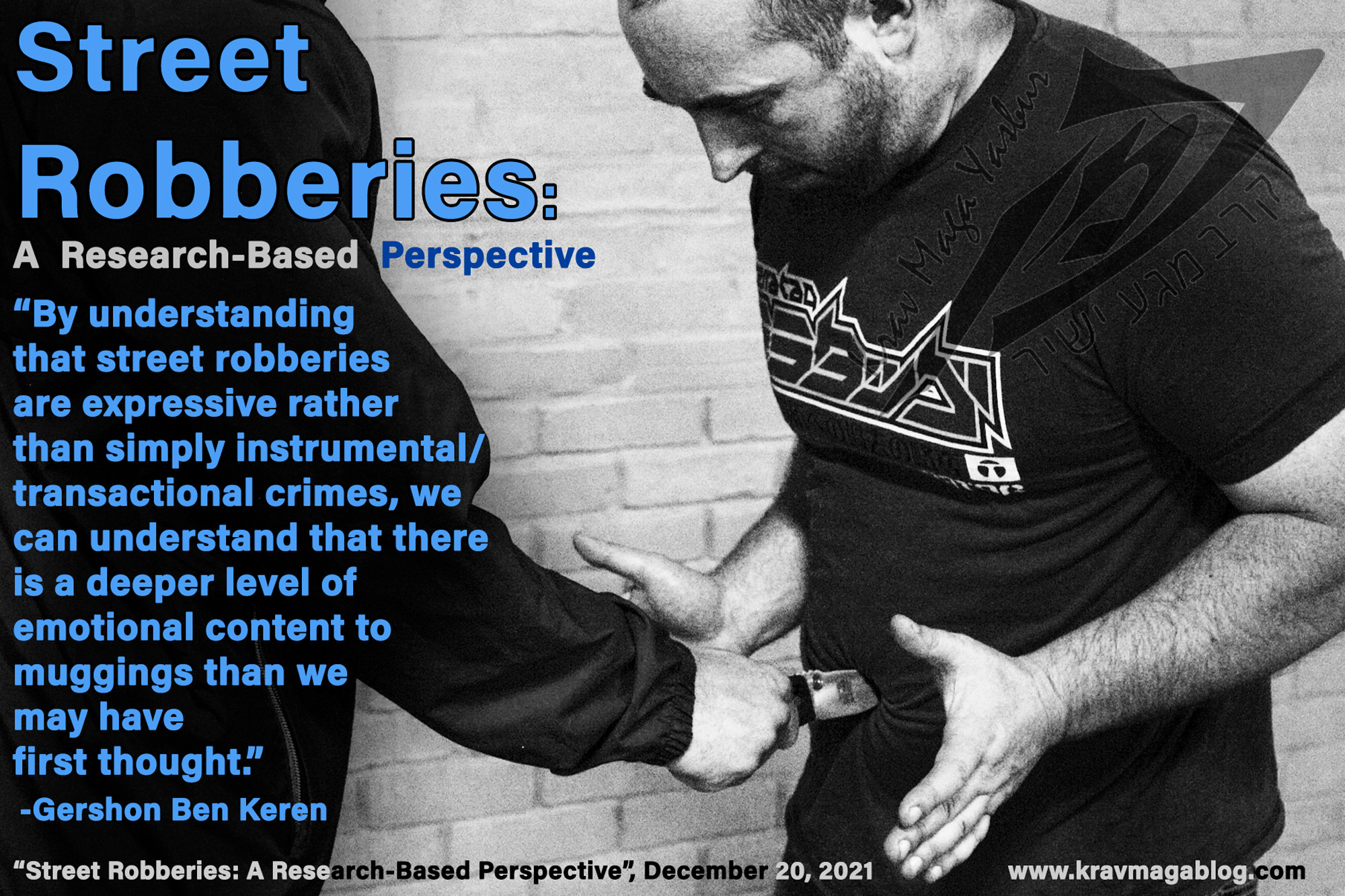Methods of Attack, is an article written by Gershon Ben Keren, a 5th Degree Black Belt in Krav Maga, who teaches Krav Maga in Boston, MA. He has also authored three Amazon best-Selling Books on Krav Maga.
Attacks and assaults occur along a timeline, with warning signs and pre-violence indicators, that precede the physical phase of the assault. There is sometimes a tendency within the self-defense world, to simply teach that a punch is a punch, a grab is a grab, a push is a push, etc., without looking at the context within which these assaults are made e.g. there is a big difference between dealing with a grab, following an assailant having tried to disguise their motives, win your trust and putting you at ease, and one where a visibly aggressive person verbally confronts and threatens you before trying to take hold of you. We may use the same technique to deal with both attacks, however contextually the two situations are very, very different. For us to be effective, in both preventing and dealing with different types of violent situations, we must recognize that there are different “methods” of attack, and these should be incorporated into our training.
There are four general methods of attack, that most assaults will fall into. These are:
1. Blitzing
2. Ambush
3. Grooming
4. Burning (Fast/Slow)
Blitz style attacks, are the ones that we don’t see coming e.g. somebody grabs you from behind and starts shanking a knife into your buttocks and lower back/legs (do you train for this?), or grabs you from behind in a rear strangle, pulling you to the ground, or cold cocks you from the side, etc. They are the attacks that come out of nowhere, and take us completely by surprise. Although it’s true that such attacks do occur- and the media does like to report on them- they are not that common when compared to other methods of attack. These are the types of attack that hit us emotionally. One question I get a lot when teaching people who haven’t trained before is, “but what do you do when you’re grabbed from behind?” There tends to be a view amongst the general public that most assailants attack their victims from behind, without giving any warning, etc. Although this may seem at first glance a logical way for predators to attack their victims, in most cases it doesn’t serve their ultimate motive(s) e.g. it is easier to “convince” a person to get into a car, than to drag them into it, kicking and screaming. Blitz attacks are conducted by predatory individuals who have planned their assaults.
In an ambush, a predator uses some form of request or interaction, to allow them to put you at ease, whilst at the same time synchronizing their movement to yours, and closing the distance between you. They may ask you for directions, the time (a strange request when most people have a mobile phone these days), or for money, etc. Their goal is to arrest your movement, and put you off guard, so that they, or an accomplice, can make an attack. Such ambushes play on our desire to be seen as polite and social, and not appear rude to people. This is something a lot of predatory individuals will use against us, creating socially awkward situations, that direct us to acquiesce and comply with their demands. I have no problem if I’m perceived as being rude or not; if someone wants to interact with me when I’m in public, and my polite but firm refusal is taken as rudeness, I’m comfortable with that. There may be times I interact. If you’re a family with kids, and I’ve been able to observe you for a period of time, etc., I may engage with you, but as a rule of thumb, no; I’ll keep moving.
A more sophisticated type of ambush is known as grooming. When somebody grooms you, they are looking to get you to hand over control of the situation to them. They are not just looking to disarm you and get you to lower your guard, they’re looking for you to be passive, and for them to guide and control your decisions. When I do corporate training, I often start the session by asking if anyone would ever get into a car with a stranger (I clarify that this doesn’t include Taxi and Uber drivers, etc.). Most people believe that they never would. The problem is that when they think of scenarios involving getting into a stranger’s car, they are imagining somebody pulling up alongside them and asking for them to get in – when we were kids that’s the type of scenario/situation that our parents warned us against i.e. a man in a car or van pulling up, whilst we played in our front yard or at the park, and asking us if we wanted to go for a ride, see some puppies, etc. Predators who prey on adult victims, know that trying this method would be unsuccessful, and so are more subtle/sophisticated about getting their victims to come with them in their cars.
When I was studying for my Master’s, I became involved in a case study that had seen 27 victims raped/sexually assaulted by a single predator (this is an extremely high number, because most sexual assaults aren’t reported). The assailant used the same method each time, to get his victims to get “willingly” into his car. His MO (Modus Operandi) was to date women online – this was in the very early days of internet dating, demonstrating that predators are very quick to adopt new methods by which to gain access to potential victims. He’d organize dates, suggesting they should go for a meal, but allowing his victims to choose the location and times of where they’d meet, giving them the illusion of control – the first step in the grooming process. He understood that when people go on dates, they are hoping that everything will go well, and that the person they’re out with want to see them again (this is the same for both men and women) i.e. he understood what people want from a date. Towards the end of the meal, he’d say something along the lines of, “this has been great, I haven’t enjoyed myself this much in such a long time. It would be a shame to end things now. I know a great bar across town, why don’t we finish the evening up there?” Even before the first date was over, he was offering a “second” date – something that most people on a successful date are already looking for – predatory individuals are very good at recognizing what we want to get out of a situation, and will play to this. He’d also been extremely flattering, by saying that he’d enjoyed his date’s company – we all like to be flattered, especially in a dating setting, and feel more at ease with people who think something of us i.e. our guard drops. In 27 instances, we know that his victims agreed to go with him (in truth the number is probably much higher). Once he and his date were in the parking lot, he’d say, “tell you what, it’s not the easiest place to find, why don’t we just take my car. We can talk on the way and I can drop you back here afterwards. I’ll be the designated driver.” His victims/targets had a choice: they could go on the early “second” date, but it would mean getting into a car with a man they’d met only an hour or so earlier. Twenty-seven women took that chance, even though they understood the risks – in interviews all expressed personal safety concerns about getting in the car. If his victims hesitated, he’d directly shut down their concerns by stating them, “What? You think I’m going to attack you?” etc. By voicing the objection on behalf of the victim, he’d present their concern as an insult, which had offended him. His victims were too polite, and wanting to get back on the good side of a man they liked and wanted to see again, accepted the ride.
Predatory individuals, especially rapists, are socially skilled players, who know how to create socially awkward situations to direct our actions and behaviors. They’ll get us to want what they want, and voice our concerns for us. Every objection we have, every conversational escape route we have, they’ll shut the door on it, until we’re left with one option; to appear rude, voice our objections, and walk away. This can be extremely difficult, especially if a large part of us wants what the other person wants, whatever that is. Pedophiles know how to package what they are offering in a way that is attractive to a child (not all choose to do this), giving gifts, attention, and praise as a reward or incentive to engage in their abusive activities. They are very quick to find out what their victims want, and then provide it, in return for taking part in their activities. They know how to explain away their victim’s objections, and questions, and use their victim’s confusion to get them to doubt themselves e.g. they can create a physically pleasurable sensation for a child, that at the same time is emotionally and psychologically painful, and direct their victim to believe that the correct understanding of what they are experiencing is good and enjoyable, etc. We often think that ourselves and our children are too smart and savvy to fall for a predator’s grooming process, however such individuals live their lives 24x7, creating ways to exploit our confidences and safety rules. When we compare this with the amount of time we spend trying to understand these persons and their methods, we are a long way behind on the curve. I’m not surprised so many women got in the car, with a man they’d only known for an hour or so; they were dealing with an extremely skilled predator, who knew how to play his victims.
In “Slow” and “Fast” Burn situations, you are dealing with an individual who has become aggressive due to actions and behaviors on your part – whether real or perceived e.g. somebody believes you spilt a drink over them, cut them off in a queue or a line of traffic, etc. These are spontaneous acts of aggression, where something you have done, has lit the person’s fuse. Sometimes it’s a short fuse, sometimes a long one. If it’s a relatively long one, you may be able to deescalate the situation, and work with your aggressor to find an alternative to violence. If your aggressor has a short fuse, it will burn quicker, and there may not be the time for talking.
These different methods of attack, should be incorporated into our training. We should set up training scenarios, where there are ambushes, as well as burn situations where de-escalation could be a solution, etc. We should set up situations where a training partner tries to “groom” us and get us to do something that may at first not seem to compromise our safety, but sets them up to push for something else that does. This is the reality of violence, and our training should reflect it. Next time you teach or practice a gun disarm, imagine the context in which such an incident would occur – were you ambushed, groomed, or did something you do cause the person to become aggressive, etc? Add visualization to this, when you’re outside of the training environment, and your mindset will start to become attuned to the realities of violence.
0 COMMENTS














